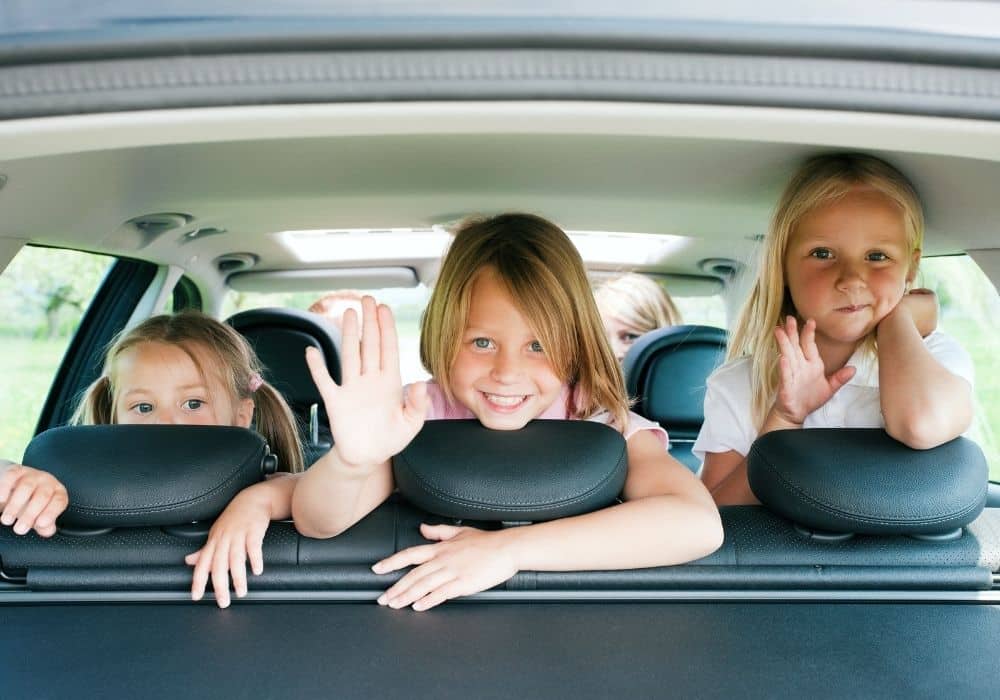New to the Lowcountry? Or just a new parent? If you’ve never experienced hurricane season with kids, this is the guide for you.
The Atlantic hurricane season runs from June 1 through November 30 — though occasionally tropical storms or hurricanes can form outside of the official hurricane season. Typically, the strongest hurricanes form between mid-August and mid-October.
Tracking hurricanes and hurricane categories
To understand hurricane activity, you first need to understand hurricane categories and the Saffir-Simpson Hurricane Wind Scale.
When meteorologists first start watching a potential tropical storm or hurricane form, they’ll mention a “tropical disturbance.” Once the National Hurricane Center starts closely monitoring a particular tropical disturbance, they’ll call it an “invest.” This is when you can start tracking the potential storm on the NHC website.
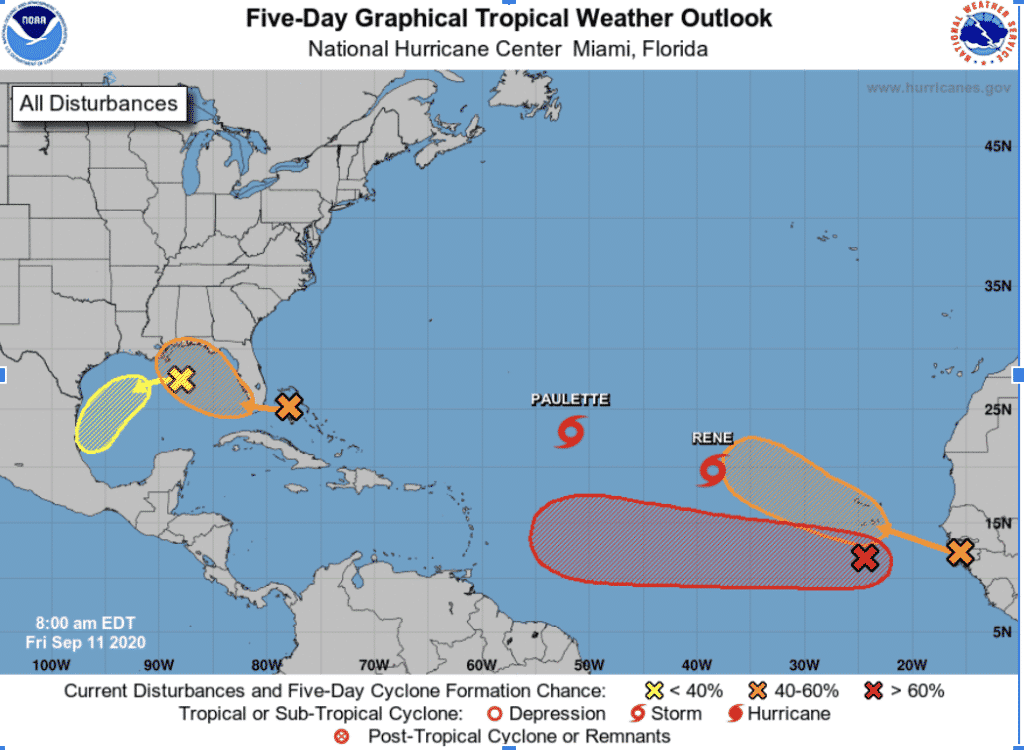
ADVERTISEMENT
Once a tropical system forms, it will fall into a category based on its strength (based on wind speed and pressure):
- A tropical depression has a maximum sustained wind speed of 38 mph or less.
- A tropical storm has max sustained winds of 39 to 73 mph.
- A hurricane has sustained winds over 73 mph.
Hurricane categories are rated based on the Saffir-Simpson Hurricane Wind Scale:
- Category 1: Sustained winds of 74-95 mph. Expect some damage to buildings, trees and power lines. Power outages are likely.
- Category 2: Sustained winds of 96-110 mph. Extensive damage to buildings, snapped or uprooted trees; power outages can last for several days to weeks.
- Category 3: Sustained winds of 111-129 mph. Devastating damage to buildings. Power and water outages for several days to months.
- Category 4: Sustained winds of 130-156 mph. Catastrophic damage to buildings. Area likely to be uninhabitable for weeks to months.
- Category 5: Sustained winds of 157 mph or higher. Most buildings will be destroyed. Area likely to be uninhabitable for months.
Now that you understand the different storm categories and how to track potential storms, when should you start to make an evacuation plan?
Always follow the advice of the NHC and local authorities
While the last few years have seen extremely active Atlantic hurricane seasons, the Lowcountry has not had a major hurricane make landfall since Hurricane Hugo in 1989.
Since 2016, Beaufort County has had four mandatory evacuations: For Hurricane Matthew in 2016, Tropical Storm Irma in 2017, Hurricane Florence in 2018, and Hurricane Dorian in 2019.
So when do you really need to start paying attention to a particular hurricane — and when should you start planning for a potential evacuation?
You should always follow the advice of the NHC and local authorities — they are your trusted sources during hurricane season. This includes:
- Beaufort County Sheriff’s Office
- Berkeley County Sheriff’s Office
- Berkeley County Emergency Management
- Charleston County Sheriff’s Office
- Chatham County Sheriff’s Office
- Chatham Emergency Management Agency
- Colleton County Sheriff’s Office
- Dorchester County Emergency Management
- Jasper County Sheriff’s Office
- Jasper County Emergency Management
For the most up-to-date news, follow the social media pages of the above law enforcement as well as any alerts via Nixle, text/email, or their official websites; the National Hurricane Center’s website and social media (Facebook and Twitter) and tune into your local news organizations.
The following radio stations broadcast information for the Beaufort County Sheriff’s Office:
DBC Radio Group:
Bluffton:
Savannah:
- WGCO 98.3 FM (Top 40)
- WRWN 107.9 FM (Classic Hits)
- WUBB 106.9 FM (Country)
- WFXH 106.1 FM (Active Rock)
- WXYY 100.1 FM (Classic Hip Hop)
- WOEZ 93.7 FM (Adult Contemporary)
- WVSC 99.1 FM / 106.5 FM (Oldies)
- WVSC 103.1 FM (Adult Contemporary)
- WLHH 104.9 FM (Classic Hits)
Local Online and Print News:
- The Island Packet/Beaufort Gazette
- The Post & Courier
- The Island News
- Fits News
Local TV news:
ADVERTISEMENT
The NHC will constantly update its website when there’s an active storm with potential hurricane tracks and other forecast information. If it starts looking like the hurricane could impact the Lowcountry, a Hurricane Watch will be issued about 48 hours before the hurricane is forecast to hit the area. If the hurricane follows the track and becomes expected in the area, then it’ll be upgraded to a Hurricane Warning about 36 hours before the storm is expected to impact the area.
Voluntary evacuations are typically issued by local authorities if a major hurricane is on track to hit the Lowcountry. In South Carolina, only the S.C. Governor can order mandatory evacuations. These evacuations can be ordered at the last minute — so even though you technically don’t have to leave until then, if you can leave earlier you’ll be able to avoid the traffic nightmare that accompanies a mandatory evacuation.
Be prepared early for a hurricane evacuation with your kids
Before hurricane season even begins, you should put together a hurricane kit and “go bags” for the whole family.
The hurricane kits are essential if you end up riding out a storm at home instead of evacuating. Even tropical storms can knock out power and make it impossible to leave your neighborhood for supplies for at least a day or so. So it’s super important to make sure your home is stocked with the essentials.
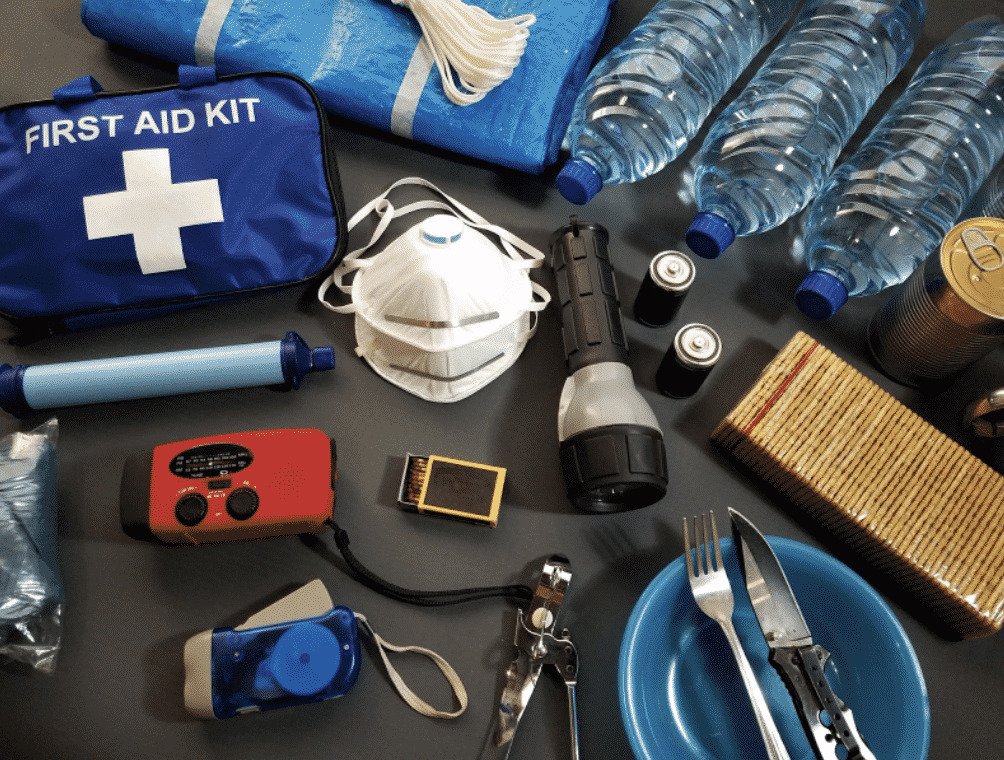
Here’s what you should include in a standard hurricane kit with kids:
- Water (at least one gallon/person per day, for a minimum of 3 days)
- A manual can opener
- Flashlights and Batteries
- First aid kit
- Battery-powered or hand-crank radio
- Dust masks
- Baby wipes, diapers and ointment
- Trash bags
- External batteries for cell phones
- Mess kits/camping dish set or paper plates and utensils
- Cups, water bottles, sippy cups and bottles
- Local maps
- Family contact information
- Pet food and supplies
- Water (at least one gallon/person per day, for a minimum of 3 days)
- A manual can opener
- Flashlights and Batteries
- First aid kit
- Battery-powered or hand-crank radio
- Dust masks
- Baby wipes, diapers and ointment
- Trash bags
- External batteries for cell phones
- Mess kits/camping dish set or paper plates and utensils
- Cups, water bottles, sippy cups and bottles
- Local maps
- Family contact information
- Pet food and supplies
ADVERTISEMENT
At least a 3-day supply of nonperishable food, which could include these ideas:
- Canned tuna or chicken
- Canned fruit and vegetables
- Protein bars, fruit bars and/or cereal bars
- Dried fruit
- Trail mix
- Crackers
- Peanut butter
- Chips/Veggie Straws
- Cheerios or another type of cereal
- Shelf-stable milk
- Applesauce
- Toddler snacks
- Baby food
- Formula
*This checklist for families from the CDC is also great for making your hurricane kit.
ADVERTISEMENT
Your “go bags” should remain packed or at least partially packed with a list of the rest of the stuff you need to grab in case you do need to evacuate. Since there’s often so little time to actually evacuate once an order is issued, you really won’t want to waste any time trying to figure out what you need to bring with you. Having a “go bag” will let you leave that much faster — and be one less thing to stress about. Backpacks are great for a go bag, but a small duffel, suitcase or even tote bags or grocery bags will work.
For the “go bags,” pack each one like you’re going away for a few days — except add a few other important items into your own bag.
The parents’ hurricane evacuation bag(s) should include:
- A toiletry kit
- Important documents (vital records, identification, pet records, important financial or medical records/documents, insurance information)
- Cash (at least enough to pay for gas)
- Clothing for at least a few days
- A first aid kit with nonprescription medications
- Prescription medications
- Eyeglasses or contacts and contact cases/solutions
- Electronics and chargers
- Snacks (like granola bars) and water bottles
A bag to evacuate from hurricanes with kids should include:
- Clothing for at least a few days
- Toiletry items (Don’t forget to include plenty of diapers/wipes/pull-ups if you have a little one!)
- Snacks/baby food
- Bottles or sippy cups
- Water, shelf stable milk, juice boxes or formula
- Breast pump with charger and extra batteries, as well as breast milk storage bags
- A few toys (especially stuff to keep them busy in the car)
- A blanket (for the car or waiting at a shelter or hotel)
- A book, game or coloring/activity book for each child
And don’t forget the pets! Make them a hurricane evacuation bag that includes:
- An extra food and water bowl
- Food + snacks
- At least one comfort toy
- Blanket or bed
- Leash/harness
- Carrier
While the go bags are meant to be easy to grab & go, you really should bring your full hurricane kit, too. Traffic will be insane, so having extra food and water and the other emergency supplies on hand is always a good idea. The kit can always be stored underneath everything else in the car while the go bags are more easily accessible during the drive.
And if you’re planning on heading to a shelter, we’d recommend every family member grabbing their pillow and blanket and taking it with them (or even add sleeping bags to your “go bags” if you can). Even if your plan is to head to a hotel or a family/friend’s house, your kids will probably be glad to have a blanket for naps in the car.
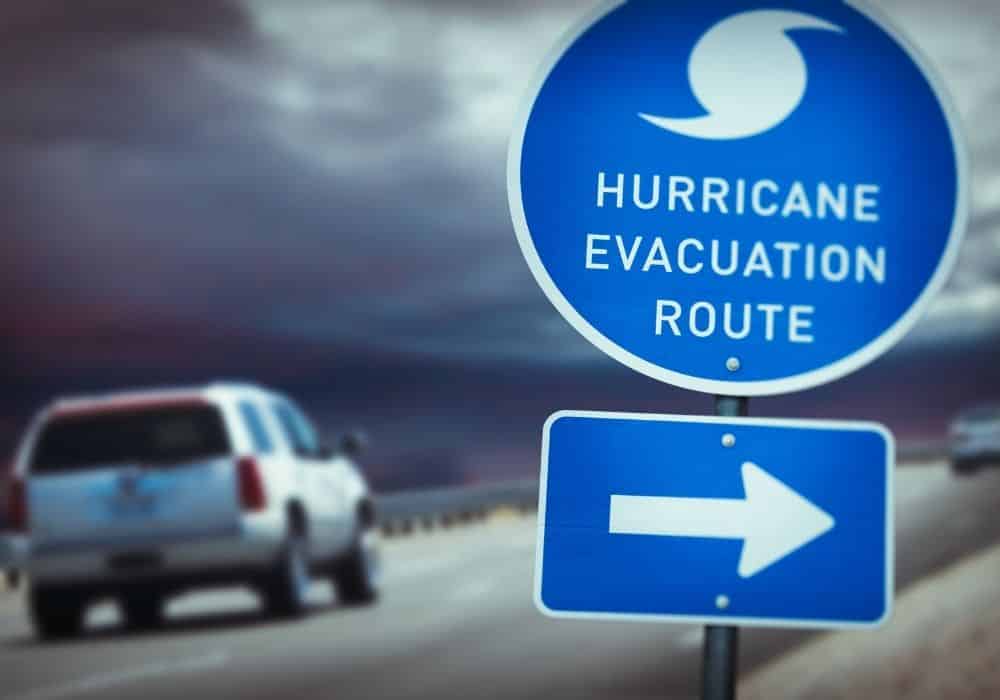
How to make a plan to evacuate hurricanes with kids
Just like you should have your hurricane kits and go bags packed before a hurricane is heading our way, you should also make an evacuation plan before the season begins. Here’s what you should know:
Know your zone for evacuating hurricanes with kids
When evacuations are ordered, they are ordered by predesignated zones. The South
Carolina Emergency Management Division’s Know Your Zone interactive map will show
you what zone you’re in based on your home address. Make a note of this zone — and
follow evacuation instructions given for your zone.
Know your evacuation routes to evacuate hurricanes with kids
Each zone has specific evacuation routes. Make sure you know yours! Most places will have lane reversals and there are signs along the route, but it’s still good to know your evacuation route ahead of time — especially when you’re trying to locate shelters or hotels.
Use this map from the S.C. Department of Transportation to figure out your evacuation route.
Most of the sheriff offices and emergency management agencies have specific evacuation route information on their sites:
Have a plan for shelters/hotels when evacuating hurricanes with kids
To find local shelters, turn to your local emergency management or check this live map from the Red Cross website. If you have pets, make sure whatever shelter you are planning to use is pet friendly.
If you’d rather stay in a hotel, book it as early as possible. Most hotels have a 48-hour cancellation notice, so you could book before an evacuation is even ordered and cancel it if the storm weakens/changes paths or book it as soon as an evacuation order goes out. For this reason, it’s good to have a list of hotels that meet your criteria on hand before a storm is heading your way. That means, make sure you can get to it from your evacuation route, make sure it has the type of rooms/accommodations your family needs, and make sure it’s pet friendly if you have any pets (hotels are not legally required to house your pets during a hurricane).
For those choosing the hotel option: Save your receipts! You might be able to get financial assistance from FEMA or your insurance after the storm.
ADVERTISEMENT
Start an emergency fund for hurricane evacuations with kids
If you’re able to, try to put some money into an emergency fund. This is the money you can use to build your emergency kits, use for a hotel, pay for gas, etc. It’s also good to save up some cash if you have a safe place to store it (like a fireproof safe) — during emergencies, ATMs and card readers might be down.
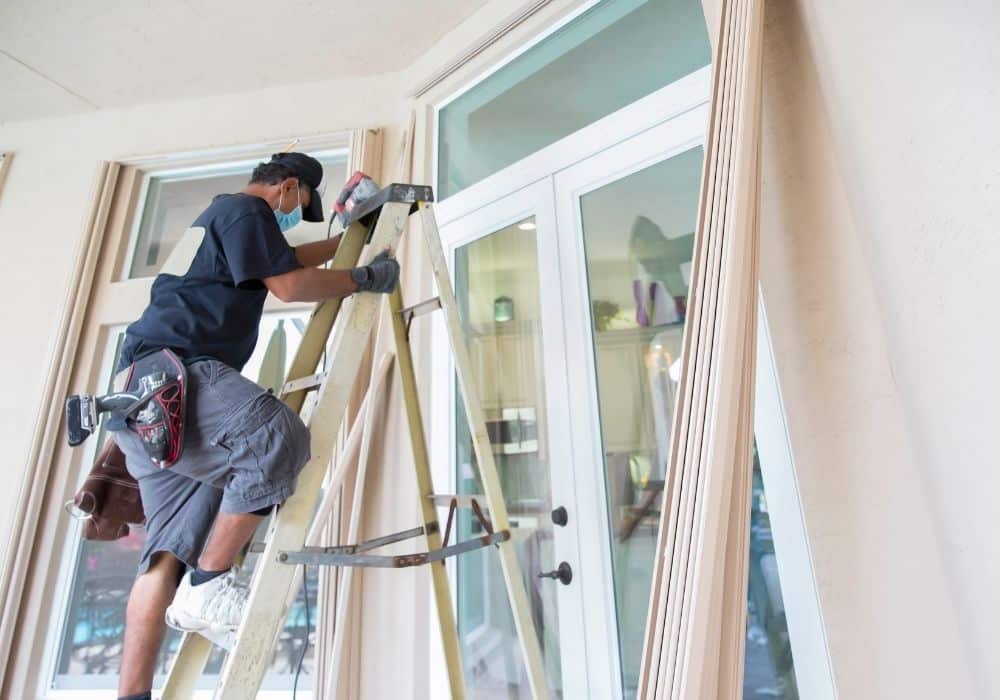
How to prep your home for hurricanes
It’s best to start preparing your home as soon as a tropical storm or hurricane watch is issued — and some things you can even prepare ahead of time. Here’s what you need to do:
Clear your yard and porches
Make sure there’s nothing outside that can blow around. Move everything inside that you can, or try to move things under shelter or tie them down.
Protect your windows and any glass doors with storm shutters or board them up with plywood.
Know how to turn your power and water supply off
Make sure you turn both off before you leave for an evacuation. Hilton Head PSD has some great information on how to turn your water off.
If you do evacuate, you can also unplug all appliances in your home and try to move things off of the floor before you leave to prevent water damage.
Check your insurance information
Something you should really do before hurricane season is check your insurance information — and upgrade if needed. Make sure you have both flood and wind damage covered in your policy.
Take photos of all valuables and store them on the cloud or on a flash drive that you put in your go bag so you have them for your insurance. The easiest way is to just do a photo walkthrough of your house like you’re doing a virtual tour, and then take close-ups of serial numbers on any expensive electronics or other items you can’t bring with you.
Storm-proof your home in the off season.
- Getting your roof checked
- Upgrading doors and windows
- Installing hurricane shutters
- Trimming trees around your home
ADVERTISEMENT
More tips for evacuating hurricanes with kids
Get gas early before your evacuate a hurricane with kids
If there’s even a slight chance of a hurricane heading our way, make sure you keep your gas tank full. Lines at gas stations will be super long as soon as an evacuation is ordered — adding even more car time for you and the little ones. And even though you might not want to wait in that line, DO NOT attempt to evacuate without at least half a tank of gas. Traffic can become a gridlock situation, even with lane reversals.
There are never too many snacks
We can’t emphasize this enough: Bring ALL of the snacks. Really, when you’re packing your hurricane kit and your go bags, you really can’t have too many snacks. As we mentioned, traffic can get pretty insane during evacuations, so you’ll want plenty of food options in the car for when you’re stuck on the road.
Don’t forget the comfort toy and blankie
Kids get stressed too! So try not to forget their favorite comfort toy or blanket to give them that extra sense of security.
Prepare for potty emergencies
If you have kids the potty-training age or even a little older, prepare for bathroom emergencies. You might want to bring a travel potty chair, and make sure you pack plenty of extra clothes for the little ones just in case.
Have plenty of in-car entertainment for little ones
Whether it’s books, toys, activity books, a tablet … have something to help entertain the little ones for hours in the car — and even once you arrive at the shelter or hotel. Here’s a great list of how to entertain itty bitty kids.
If you don’t have transportation
Check your local emergency management or department of transportation division. Public transportation should be provided during a mandatory evacuation. For example, here’s Beaufort County’s plan.
ADVERTISEMENT

